Musket balls found in Greenfield reveal new details of Great Falls Massacre in 1676
| Published: 08-11-2024 12:01 PM |
GREENFIELD — Archaeologists are continuing their work in Greenfield after an enlightening discovery that has changed the way historians view the path of conflict between British soldiers and Native Americans during the Great Falls Massacre of 1676.
Chief Archaeologist Kevin McBride, of Berlin, Connecticut-based archaeological consulting group Heritage Consultants, shared an update of their findings with Montague’s Battlefield Grant Advisory Committee last week. The archaeological digs have been part of a near decade-long effort to study “how and why this particular battle precipitated a shift in the military strategy and war efforts of Indigenous and colonial groups, and how those changes contributed to the foundation of this country,” the project narrative states.
According to the Nolumbeka Project, an Indigenous history and culture preservation nonprofit, the Great Falls Massacre of May 19, 1676 is considered the major turning point of King Philip’s War, when 300 women, children and elders were killed during a surprise pre-dawn attack led by Capt. William Turner.
McBride explained since Heritage Consultants began its work in the area north of Colorado Avenue and west of Meridian Street, around 150 musket balls have been found alongside other personal items and weapons, indicating an intense battle between British and Native fighters as the British retreated south from Barton Cove in Gill.
“Over the last six weeks, we’ve gotten 150 musket balls ... which is certainly among the highest we’ve gotten anywhere in the battlefield,” McBride said.
The original expectation was for the archaeologists to be on site for a few weeks starting in March, until the highly concentrated cluster of musket balls was found.
Part of the main take-away from the last several months of surveying, McBride said, was the need to document the musket balls and personal items found within the survey site, as well as make sense of the findings while considering existing narratives around the fight and the British retreat.
“What’s been found on this site so far is a lot of evidence of intense fighting — mostly [musket] balls, dropped equipment, personal items like buttons, buckles, jaw harps, knives, things like that,” McBride said while on site on Colorado Avenue on Aug. 2.
Article continues after...
Yesterday's Most Read Articles
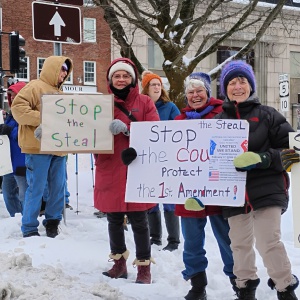 Local ‘Hands Off!’ standouts planned as part of national effort
Local ‘Hands Off!’ standouts planned as part of national effort
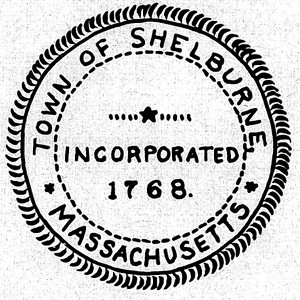 Shelburne Selectboard determines police detective will retain job
Shelburne Selectboard determines police detective will retain job
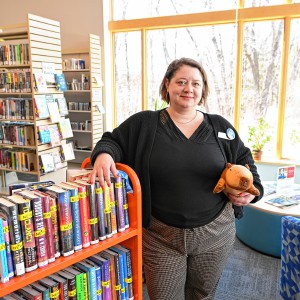 Local libraries react to state funding cuts, federal administrative leave
Local libraries react to state funding cuts, federal administrative leave
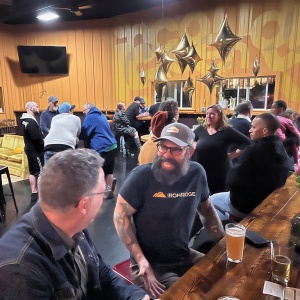 Incandescent Brewing now open in Bernardston
Incandescent Brewing now open in Bernardston
 Cooking up an expansion: Cocina Lupita eyes second location in Turners Falls
Cooking up an expansion: Cocina Lupita eyes second location in Turners Falls
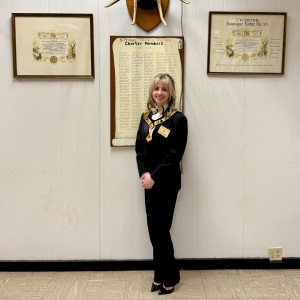 ‘She is our future’: Thirty years after permitting women to join, Montague Elks is almost entirely women-led
‘She is our future’: Thirty years after permitting women to join, Montague Elks is almost entirely women-led
The understanding now is that as the British retreated from Barton Cove, the soldiers trailed south along the Green River, leading into Greenfield and across the Deerfield River. According to McBride, fighting between the British and Native forces is now understood to have been more stationary, as evidenced by the cluster of musket balls, rather than a “running battle.”
Archaeologists’ findings have led to more questions around the existing understanding of the battle. Finding answers around the movement of the British retreat and the land changes from 1676 till now, along with distinguishing between British and Native fire, have become a priority as site work continues.
Grant funding from the National Park Service’s American Battlefield Protection Program allows archaeologists like McBride to work with municipalities to create an updated historical narrative. Tim Blagg, a member of the Greenfield Historical Commission, noted these findings are important when it comes to creating a wider understanding of the battle that contemporary history doesn’t account for.
“What this Greenfield work has shown us is that’s not the whole picture,” Blagg said of previous knowledge about the Great Falls Massacre. “The battle continued through Greenfield and south, and there was a running fight that was much fiercer, much more intense than anybody had anticipated.”
Blagg said the work done so far has been extensive, and for the archaeologists, this is an exciting development that could shifts the plans for the project. Archaeologists may now investigate areas located farther south that were originally not considered.
“We’ve talked about them going over the river into Deerfield and continuing on, which would be outside the scope of the immediate work that they’re doing,” Blagg said, adding that this could be difficult due to the fact that Deerfield has been settled for a long period of time, so dating any artifacts could be tricky.
Each of the musket balls and other items are documented in a Geographic Information System (GIS) with descriptions attached. The mapping of these items on the GIS creates a visual direction of where the retreat and fighting occurred. In the GIS, musket balls can be classified as impacted or unimpacted, revealing if they hit an object or not upon being fired, allowing for more understanding as to the nature of the fighting.
“We can tell if they’re dropped. We can tell if they’re impacted. Sometimes you can tell what they impacted on. Sometimes you can tell direction of fire,” McBride said.
As for the personal items, a mix of British and Native items were discovered. Some items were broken, possibly indicating intense fighting.
The dropped musket balls, McBride said, have helped provide clues to answer some of the remaining questions that primary accounts can’t always answer. McBride explained that the dropped musket balls were a unique finding that could be a sign of a struggle or retreat as someone dropped the ammunition.
These indicators attached to the musket balls, along with their caliber and location, can also help tie primary accounts from British soldiers, colonists and Natives to what the physical findings indicate, creating a more comprehensive idea of what transpired.
“There’s several histories of the war that were written at the time of the war,” McBride said. “They’re all very helpful, but a lot of times they’re not detailed or they’re incomplete.”
As these artifacts are logged and eventually analyzed, the contemporary narrative around the Great Falls Massacre will expand.
The long-term goal of the partnership to survey the Great Falls Massacre area, according to Heritage Consultants’ website, is “to eventually prepare a National Register of Historic Places registration form to nominate the battlefield and associated sites to the National Register of Historic Places.”
Erin-Leigh Hoffman can be reached at ehoffman@recorder.com or 413-930-4231.








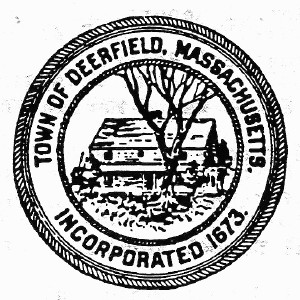 New panel to review senior housing proposals in Deerfield
New panel to review senior housing proposals in Deerfield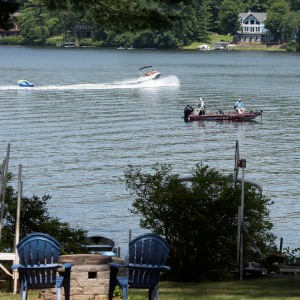 Shutesbury reviewing how to improve safety on Lake Wyola in wake of accident last summer
Shutesbury reviewing how to improve safety on Lake Wyola in wake of accident last summer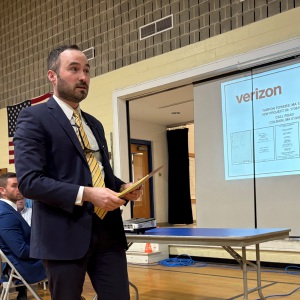 Colrain zoning board approves variance for Call Road cell tower
Colrain zoning board approves variance for Call Road cell tower
